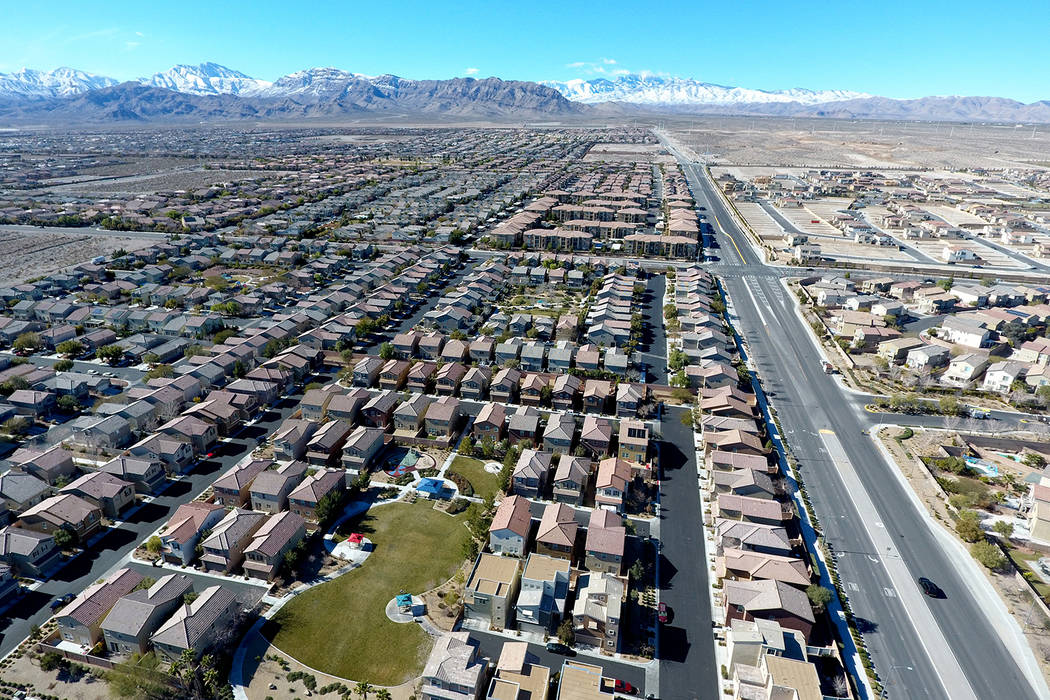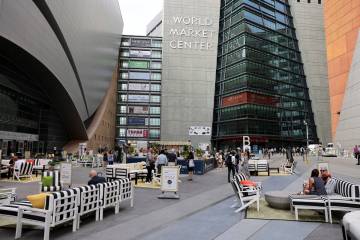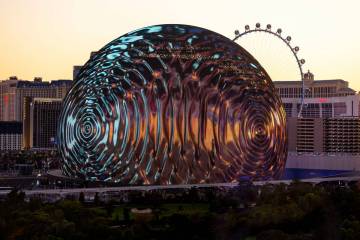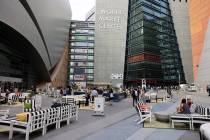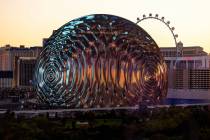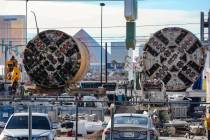Las Vegas Market 2019: Architect weighs in on valley’s lookalike landscape
Las Vegas, it’s fair to say, is not known for its architectural splendor.
There are pockets of thoughtful design outside the Strip, but by and large, the valley is flooded with subdivisions of cookie-cutter stucco houses and look-alike strip malls and office buildings.
Southern California architect Christopher Mercier, in town this week for the Las Vegas Market furniture and home-decor expo at downtown’s World Market Center, gave a presentation Tuesday at the convention, which runs through Thursday and draws around 50,000 people. He spoke with the Las Vegas Review-Journal afterward about the local architectural landscape.
Mercier, founder of Inglewood, California-based FER Studio, said he visits Las Vegas at least once or twice a year, and housing developments here remind him of the “frustration” he felt watching tract subdivisions get built “one after the other” while growing up in Michigan.
Builders here will put up a house that can be found “pretty much anywhere, clad it in materials that make it look desert-y” and then “seal it up” and put in the air conditioning, but that approach doesn’t address what it means to live in a desert, he said.
“I would love to do a subdivision project in Vegas, but one where we look at it from what the midcentury-modern architects were doing” in trying to offer “indoor-outdoor” living and “experiences that have to do with the desert,” he said.
Houses here tend to look the same because when the valley was growing rapidly — especially in the 1990s and early 2000s — builders were more concerned with construction speed than design, according to Eric Strain, associate professor of architecture at UNLV.
“There wasn’t a lot of thought that went into it,” he said.
Southern Nevada’s homebuilding market has grown considerably since the recession, when it was all but wiped out, but it’s still a fraction of its pre-recession peak. Builders closed around 10,670 sales last year, compared to nearly 39,000 in 2005 during the real estate bubble, according to Home Builders Research.
Strain figures there is more competition today. As he sees it, there is “more evolution” in design, as developers have to offer buyers something they can’t get elsewhere.
In the 1990s, he said, “you could build anything and people would buy it.” Today, homebuilders are “attempting to be more modern,” even if they don’t really know what that is.
“I’m not sure everybody really understands what modern and contemporary mean, but they throw those words around,” Strain said.
Contact Eli Segall at esegall@reviewjournal.com or 702-383-0342. Follow @eli_segall on Twitter.



